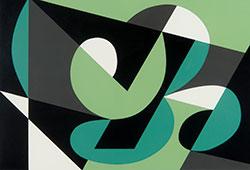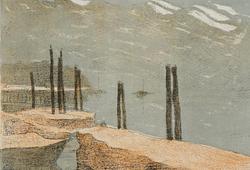Anders Zorn
"Märta"
Signed Zorn and dated 1917. Canvas 101 x 64.5 cm.
Tuontiarvonlisävero
Tuontiarvonlisävero (12%) tullaan veloittamaan tämän esineen vasarahinnasta. Lisätietoja saat soittamalla Ruotsin asiakaspalvelumme numeroon +46 8-614 08 00.
Alkuperä - Provenienssi
Consul Helge Ax:son Johnson's collection, Berga Castle.
Bukowski Auktioner AB, "Helge Ax:son Johnsons samling", 1942, illustrated full page 26, cat. no. 62.
Kirjallisuus
Gerda Boëthius, "ZORN. Tecknaren. Målaren. Etsaren. Skulptören", included in the catalog section for the year 1917, p. 555.
Albin Roosval (ed.), "Svenska slott och herresäten, Södermanland", 1923, mentioned on p.114 and illustrated p. 116.
illustrated full page 169.
Albert Engström, "Anders Zorn", 1932, illustrated full page p. 169.
Anita och Bo Stjernström, "Bergakungen och hans Slott", Västerhaninge, 2011, illustrated p. 96 and 97.
Muut tiedot
In the late 1880s, during his summer visits to Dalarö, Anders Zorn began to depict the naked female body in the sunny archipelago landscape. He came back to this theme, sometimes referred to as "naket i det fria" (nude in the open air), throughout the rest of his career and brought him great success and fame. Around the year 1910, Gerda Boëthius suggests that one can see a revival in Zorn's paintings. She believes that during this time, you can see "a new phase where both subject matter and painting have something new, and the color has acquired a special tone with a preference for pink. In his archipelago paintings, he returned with affection to the subjects of his youth, where water and cliffs are the environment. [...] He filled the canvas with finely distributed tones, planes, values, and form, so that one can 'read his paintings' like a musician reads a score. His color palette is sometimes even more puritanical than in his youth. He often creates lighting effects with scraping or extremely thin paint."
The cosmopolitan Zorn moved far beyond the country's borders and was by no means limited to staying in either Mora or the archipelago. However, this was to change with the outbreak of the First World War. The new global situation led to disruptions in the artist's international relations, which had a significant impact on his life as he became increasingly settled in Mora. The year was now divided with a greater regularity between Mora/Gopsmor, Stockholm, and the archipelago.
In the following years, Zorn executed a series of nude studies against a picturesque backdrop of water and cliffs. Despite the breakthrough of "modern" art and occasional criticism, Zorn could take pleasure in presenting himself to the broader public as a national painter. Zorn's subjects remained in high demand, and collectors and buyers continued to eagerly await his works. Boëthius writes: "Both 1917 and 1918 were good years for work, and although he was criticized by the 'modern' group, he had the joy of being repeatedly encouraged by other comrades, whom he held in high esteem. On November 1, 1918, Carl Larsson wrote: 'If my admiration for you, Anders, could increase, it has done so since I saw your latest works...'."
"Märta" was painted in 1917 and was previously part of Consul Helge Ax:son Johnson's significant collection of Anders Zorn's paintings. In Ax:son Johnson's impressive residence, Berga Castle, the painting was placed in the consul's study along with two other Zorn motifs from 1917: "Werners eka" and "Helga."
The painting 'Märta' was later moved and placed in the Upper Hall together with a large number of Zorn's paintings and etchings. To the right of 'Märta' is 'Gondola, Venice', a watercolour painted during Anders and Emma Zorn's visit to Isabella Stewart Gardner in Venice in 1894 (see image).

























































